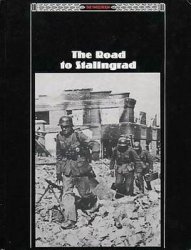Roman Catholic missionary and later archbishop in the American Southwest, Jean Baptiste Lamy was responsible for the establishment of the first school for teaching English in Santa Fe. Lamy was born in 1814 in Lempdes, France, and ordained a priest at Clermont-Ferrand in December 1838. After volunteering for missionary work, he came to the United States to minister to the growing Catholic community in Cincinnati, Ohio.
Under the terms of the Treaty of Guadalupe Hidalgo, which ended the Mexican-American War, the United States took the northern third of the Republic of Mexico, a vast area that today includes the states of Calieornia, New Mexico, and Arizona. In response to the new U. S. sovereignty, Lamy was named vicar apostolic of New Mexico. His authority extended over New Mexico, Arizona, and parts of modern Colorado, Nevada, and Utah, a vast area with a then-sparse population mostly Mexican in origin, living in small and widely dispersed villages.
From the beginning, Lamy’s new office was a challenging one. He arrived in Santa Fe to find great resentment at the appointment of an outsider to a position of such authority. In 1853 he was named bishop. He worked with Anglo-Americans, Mexicans (Mexican Americans after the treaty), and Native Americans across a vast landscape. In New Mexico he encountered a church that had become self-contained and partly secularized by distance, neglect, and personal choice. Some local priests had married into the most influential families in New Mexico, and Lamy’s attempts at reform became closely intertwined with politics. One of the defrocked priests, Jose Manuel Gallegos, became head of an anti-Lamy faction and won election as New Mexico’s territorial delegate in 1853. Father Jose Antonio Martinez represented this local authority, and after continuing disagreements, Lamy removed Martinez.
In 1875 Lamy was raised to archbishop. He was again drawn into politics by a bill in the Territorial Assembly that proposed to limit the Catholic Church’s influence in the territory’s educational system. Lamy actively opposed the bill, and it was defeated. He died at Santa Fe in 1888 after more than 35 years of service to his adopted region. His reforms reshaped the Catholic Church in the American Southwest.
Further reading: Paul Horgan, Lamy of Santa Fe; His Life and Times (New York: Farrar, Straus & Giroux, 1975).
Larkin, Thomas Oliver (1802-1858) businessman, diplomat
Merchant and U. S. consul in Mexican California, Larkin mounted an extended propaganda campaign in favor of the American acquisition of Calieornia. A native of Massachusetts, Larkin moved to California in 1832. Settling in Monterey, he quickly became a powerful commercial force in the town. He used his connections with Boston and the New England merchants to direct the growing trade of California’s pastoral economy. With the secularization of the Calieornia missions after 1833, the region’s economy shifted from the missions to the growing number of ranchos. These large pastoral estates, many of them benefiting from the acquisition of mission lands, began to develop a thriving trade in hides and tallow, carried almost exclusively in ships from New England ports. Larkin was at the heart of this growing trade.
Many American merchants who settled in California in the 1830s and 1840s married into the leading Californio families and established roots in the local Mexican community. Larkin, by contrast, remained a citizen of the United States. He married Rachel Hobson Holmes, a widow, and he was proud that his children were the first born in California to U. S. citizens. As an alien resident, he did not participate in politics, but he did discreetly support the activities of Juan Bautista Alvarado to establish an independent California.
In 1844 Secretary of State James Buchanan appointed Larkin American consul in California. In this capacity, Larkin wrote long and detailed letters to the secretary about affairs in Mexican California, ever mindful of the nation’s economic and strategic interests there. He came to believe strongly in British designs on naval anchorages along the Pacific coast, especially the harbor at San Francisco. In October 1845 Buchanan gave him an additional appointment as “confidential agent.” Buchanan asked Larkin to work for the secession of California from Mexico, with a view to its eventual annexation to the United States. In January 1845, Congress had annexed the Republic of Texas as the 31st state, and this provided a model of the direction in which Buchanan wished to move American policy regarding California. Larkin was to play a vital role in the U. S. plans.
However, these plans were cut short by John C. Fremont’s activities, and with the outbreak of the Bear Flag Revolt, Larkin found his diplomatic initiatives superseded. The beginning of the Mexican-American War the next year was President James K. Polk’s shortcut to the acquisition of California.
With the discovery of gold in California in January 1848, Larkin became one of the American government’s main sources of information about developments in the region. His correspondence with Buchanan offers one of the clearest and most insightful commentaries on the early impact of gold on California’s society and economy. In late 1848, Larkin served as a delegate to the California Constitutional Convention. Thereafter, he left public life to concentrate on his business and real estate holdings. He died in 1858.
Further reading: Hammond, George P., ed. The Larkin Papers, 10 vols. (Berkeley: University of California Press, 1951-64).




 World History
World History









